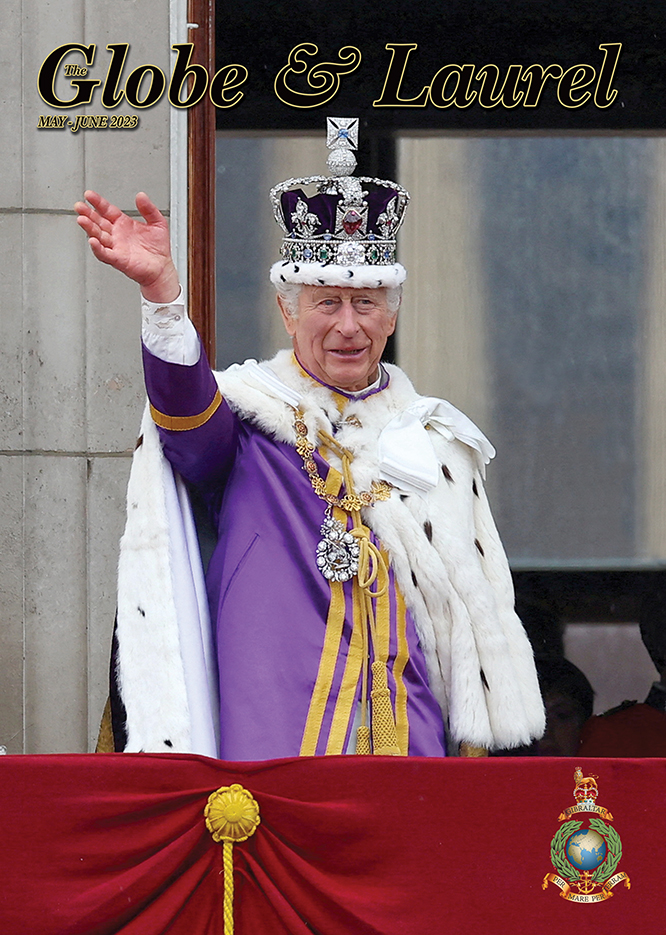The following article is taken from the latest issue of the Globe & Laurel magazine.
Click the button below to discover more.

The Royal Marines Forces Volunteer Reserve was established in 1948 as a volunteer reserve force to provide a trained body of men to support the Royal Marines during times of war or national emergency. Originally organised in four centres as training wings inspired by the main wartime functions of the Corps, Sea Service, Amphibious, Commando and Small Scale Raiding wings. In 1966 their title was changed to Royal Marines Reserves and by then their principal training was concentrated on Commandos and Small Scale Raiding.

In 2023 the Royal Marines Reserve will celebrate its 75th Anniversary. Discussion of a reserve for the Corps started much earlier, in fact as early as 1896. Whilst Marines could join the Royal Fleet Reserve from 1903 onwards, it is rightly to 1948 that the RMR traces its birth and the formation of the Royal Marines Forces Volunteer Reserve.
Prior to the establishment of the RMFVR, time served Marines could volunteer for the Royal Fleet Reserve, most had served at least 12 years in the regular Corps, with many having completed a full 21 years to pension. The Royal Fleet Reserve was created under the ‘The Naval Reserve Act, 1900,’ and of ‘The Naval Forces Act, 1903,’ to provide a reserve of trained men for service in His Majesty’s Fleet in time of emergency. Sailors and Marines who had completed more than five years regular service were eligible to join and those who in receipt of a pension received an extra five pennies a day. The men attended a week’s annual drill at their home division.
The August 1914 G&L reported: ‘SPITHEAD, and the Fleet, and the King (our Colonel), and airships, and aeroplanes, and hydroplanes-the air is full of them. Something to be proud of-all this. But we have had a little bit of luck all our own – barracks crowded and running over into tents with Fleet Reserves; parades with the old hands, recruits, and Cadet Corps – the past, the present, and the future. We have seen battalion drill excellently performed by men usually employed in doing every other job under the sun, and old instructors from every type of civilian employment just talking to and teaching their squads and sections in the same old way, just as though they had never left. Anyhow, we’ve felt it something to be proud about.
We hear a lot of being fed up with the North Sea, and going at twelve years, but does that matter a hang for England if the old hands come back when they are wanted? Going at twelve years makes room for recruits all the more trained for England’s needs, and we have seen that the training is never wasted – just there when England wants it.
Something, too, of esprit de corps in all this – something that shows it is not just an empty bit of French, but a real bit of ‘jolly’ English.’
About 2am, on 2 August 1914 the order to mobilise reserves and pensioners was issued to the Grand Divisions, and men were coming into Barracks by 8am, and practically by next day all were in – many Marines and pensioned SNCOs returned to the Colours, the units of the newly formed RND had large pensioner NCO cadres. The first casualty at Gallipoli was an RFR recalled pensioner – CSgt Alf Baldwin had retired in 1910 after 22 years’ service, he joined the RFR and was recalled in 1914. Serving with the Plymouth Btn at Gallipoli he was one of the first ashore at Sedd-ul-Bahr on 4 March 1915 – there was no opposition to our landing at Sedd-ul-Bahr, except some long-range artillery fire, until the leading men of the patrol started to debouch from the path at the head of the camber into the road which ran between the fort and village. They were immediately met by rifle fire and had to take cover behind a drinking fountain in the middle of the road. The remainder closed up under cover of a low stone wall behind it. It was here that CSgt Baldwin was killed in trying to pick off some snipers who were in the houses.
After WW1 Marines continued to join the RFR for a period of five years, and continued to attend an annual training week and were available to be mobilised in time of war. Again in WW2 many of these reservists returned to the Colours on mobilisation in 1939, all were over 40 years of age, and as experience was to show, there was not enough of them, and most were needed for the Fleet and DEMS.
After the War, the Parliamentary and Financial Secretary to the Admiralty, Mr John Dugdale, introduced the 1948 Act that formed the RMFVR to parliament – Hansard, ‘The purpose of this small and, I hope, uncontroversial Bill is to increase the reserves available to the Marines on mobilisation. It may be asked why we want to increase these reserves. The reason is that the functions of the Marines have increased. Before the last war the main function of the Marines was to provide detachments onboard ship, and only in large ships, to be used on operations on shore under the naval commander-in-chief. However, during the last war there developed what were known as Commandos and Combined Operations, and it is for this purpose that we need an increase in the number of Marines.

‘The last war exposed this shortage in a very remarkable degree. So short were we that when the Commandos were formed the Marines were not able to play their part, and an operation so typically naval as that at St Nazaire was performed, so far as the land part was concerned, by the Army and not by the Marines, because the Marines simply were not available. For the past 18 months, however, the Commandos have been a naval responsibility, and in order to see that that responsibility can be carried out to the full, should the occasion ever arise, we desire to see that we have sufficient reserves in the Marines. The present system of reserves relies only on pensioners, who are all over 40, and voluntary entrants into the Royal Fleet Reserve, but we consider those cannot possibly be enough for an emergency.’
The formation of the RMFVR was announced in the Globe & Laurel in the summer of 1948.
RMFVR Makes a Start
Recruiting Opens on 1st November.
The Royal Marines Act, 1947, has provided the necessary legislation for the formation of the Royal Marine Forces Volunteer Reserve. Their Lordships have recently approved of the setting up immediately of two Centres, which will be located as follows:-
RMFVR – City of London: Finsbury Barracks, City Road, EC2.
RMFVR Centre – City of Glasgow: Whitfield Road, Govan, Glasgow.
Recruiting at these Centres will begin on 1st November.
Arrangements are being made to open further Centres in Bristol and Liverpool during 1949. Subsequently other large towns in the country will receive consideration, including Belfast, Manchester, Birmingham, Leeds and Nottingham (or Leicester), though not necessarily in this order of priority.
In the City of Glasgow Centre it is proposed to open a Sub-Centre of the RMFVR at Greenock during 1949. In the case of certain other towns, it may also be necessary to form Sub·Centres in outlying districts. Each case will, however, be considered on its merits.
Each Centre will contain Units and Subunits which will cover the various commitments of the Corps in connection with Sea Service, Commandos, and Combined Operations. In this respect a Centre will not be the exact equivalent of a Territorial Army Unit or an Auxiliary Air Force Squadron, as it will cater for more than one commitment of the Corps.
The strength of each Unit or Subunit within a Centre will vary with the locality. The success of the new Reserve will depend very largely on the success of recruiting. To achieve this, local Commanders should make every endeavour to bring the facts concerning the Reserve to the notice of officers and other ranks who may know potential recruits in the areas of the London and Glasgow Centres.
Regulations concerning method of entry, pay and conditions of service will be promulgated shortly.
Co-operation with TA: Their Lordships have also approved that where necessary RMFVR Centres may be administered by the Territorial and Auxiliary Forces Association on behalf of the Admiralty. Such an arrangement is likely to be most beneficial to the Force both as regards accommodation and general facilities.
The City of London Centre will be so administered, whereas in Glasgow the Centre will be on similar lines to an RNVR. Division, but administered by CGRM.
Every endeavour will be made to acquaint those in the Bristol and Liverpool areas of the intention to open there in 1949.
By arrangement with the War Office, it will be possible for ex-Royal Marines and possibly some others to transfer to the Reserve if they at present belong to, or join later, the Territorial Army. No doubt similar arrangements could be made with the RNVR, in those places where an RMFVR Centre may be opened in the future.
It is realised that there will be some disappointment among those who find themselves too far away to join one of the few Centres that will be opened.
In large towns and areas Royal Marine Cadet Units will be raised. It is to be hoped that many who cannot join the RMFVR will interest themselves in this important youth movement.
The target of 1st November for opening the recruiting has been decided upon in order to avoid any further delay and consequent loss of interest due to other recruiting drives throughout the country. It is necessary to ensure that sufficient numbers are recruited before a new Reserve such as this begins training.
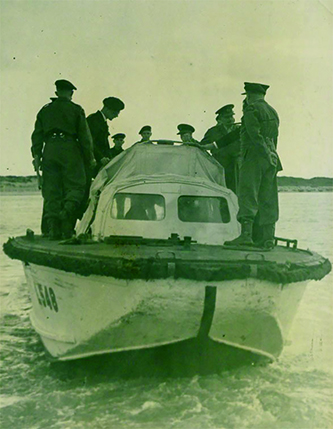
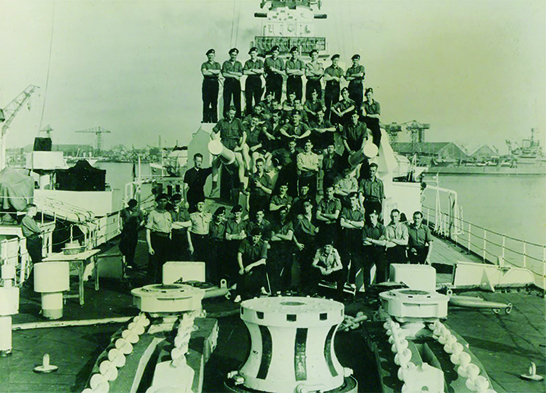
Direct Commissions. In order to provide new Centres with their establishment of officers a limited number of direct commissions will be granted to suitable applicants who have held wartime commissions in any of the fighting Services. Apart from this initial intake, it is intended that all officers of the RMFVR should be drawn from the ranks of the Force.
The exact period of training to be carried out by officers has not yet been finally decided. It is unlikely that any List I officer will be required to carry out more than an average of 14 days’ continuous training each year, which may be ashore or afloat.
Officers on List I are also required to attend for the equivalent of 80 hours’ drill per annum, which will normally mean attendance on 40 occasions for a period of two hours’ instruction. Weekend training will also be available and such periods will be deducted from those required by normal attendance at drills.’ List II officers may be required to carry out up to 28 days’ training annually until reaching the rank of Captain RMFVR when this commitment is reduced.
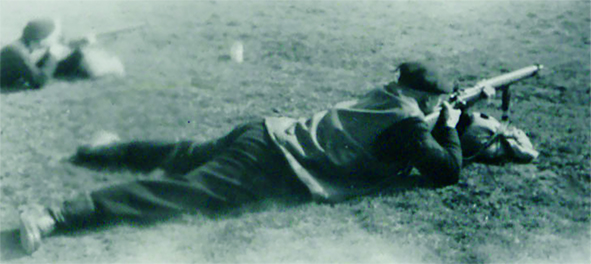
Applicants must be between the ages of, 18 and 45. Selected applicants, however, of the age of 17 may be accepted into the Force in special circumstances. So far as the overall establishment of the RMFVR will allow, every endeavour will be made to see that candidates with war service are granted the substantive rank held on release or discharge from the Service. It must be appreciated, however, that it will not be possible to do so in many cases or immediately on enlistment.’
On 5 November a ceremonial attestation for the first 30 recruits to the City of London was conducted by the Lord Mayor of the City of London at the Artillery Ground in Bunhill Fields. However the first thirty recruits attested at this ceremony were not in fact the first recruits in the RMFVR, Glasgow Centre add in all innocence of this ceremony had already attested some recruits. Recruitment for both centres flourished, recruits included retired Marines Navy, Army and RAF men and younger recruits who joined prior to undertaking National Service with the Corps.

Training for the two centres commenced in January 1949, divided for training purposes into Sea Service, Commando, Amphibious and Small Raiding Wings. Training took two evenings a week. Merseyside centre opened in February 1949 in Birkenhead and in March the Bristol centre opened.
The first annual training was held in June 1949 for the City of London and Glasgow centres, Merseyside and Bristol followed in November. Training was again divided according to wings. Sea Service wing went to the gunnery school Royal Marines at Eastney and onboard HMS Royalist; Amphibious Wings went to the technical training school Royal Marines also at Eastney as did the Small Raider Wings; the Commando wings went to the Small Arms School Royal Marines at Browndown. On 20 June Commandant General visited the training wings in their various locations.
In March 1951, the RMFVR centres were given the following unit and subunit responsibilities; 48(City of London) Commando RMFVR – City of London Centre:
47 Commando RMFVR
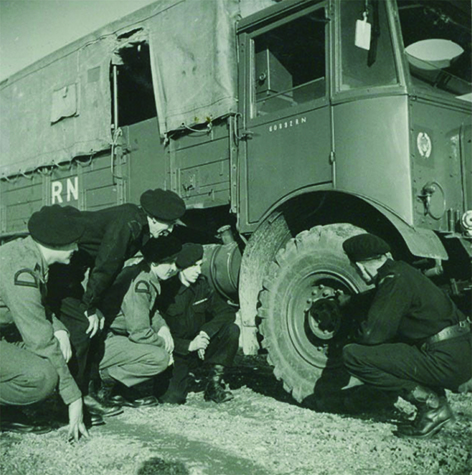
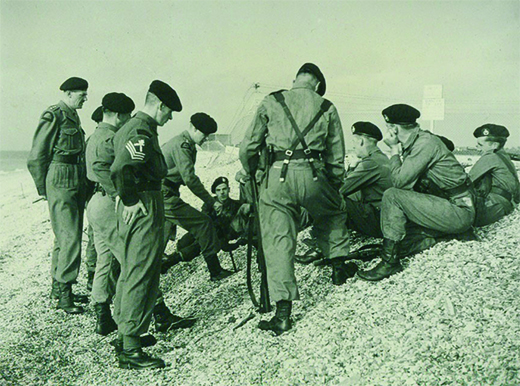

A Troop – Bristol Centre
B Troop – Merseyside Centre X Troop – Glasgow Centre
4th Special Boat Section RMFVR – City of London
5th Special Boat Section RMFVR – divided amongst other centres.
In November the same year a further allocation of responsibilities was set out; 2nd (City of London) Raiding Squadron RMFVR, consisting of:
Raiding Flotilla RMFVR
Assault Flotilla RMFVR
No2 Naval Beach Unit (Raiding) RMFVR 3rd Assault Squadron RMFVR
Assault Flotilla and No3 Beach Unit (Small) RMFVR – Glasgow
Assault Flotilla RMFVR and No4 Beach Unit (Small) RMFVR – Merseyside
Assault Flotilla RMFVR and No5 Beach Unit (Small) RMFVR – Bristol
In December 1951, the honour of wearing the Green Beret was conferred on those ranks of the RMFVR who had come up to certain qualifications during their normal drills and annual trainings. The following year’s annual training camp saw the first mass presentation… ‘On the last day of training and a week of summer weather teams from each of the provincial RMFVR Centres covered the course set by the School and already covered by City of London Centre for the 3 Commando Brigade Shield Competition. Glasgow won for the second time, under the leadership of Capt Walker. The shield was presented by the Commandant, Commando School RM on a ceremonial parade that afternoon. On the same occasion the Commandant presented the Green Beret to those who had earned it during the fortnight. Thirty ranks received their Green Beret from him.’
On 4 July 1956 the organisation of Commando wing was changed, 47 and 48 were disbanded and 46(VR) Commando was formed and in 1960 the Amphibious wing was wound up.
By 1962 RMR Merseyside was organised as; A Coy – initial training, B Coy – rifle coy of trained soldiers, The Rifle Troop – largest troop of the company containing the pool of trained soldiers and NCOS who were not LC, S or SBS rates, Landing Craft Troop, Signal Troop, The SBS and a HQ Company.
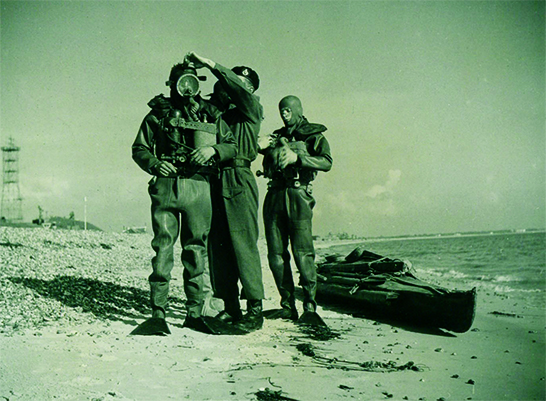
Later that year, 1962, 46(VR) Commando trained overseas for the first time, in Germany, and the Landing Craft and Sea Service wings were phased out. In 1963 Lt M F Lowe RMFVR served on operations with 42 Cdo in Borneo, the first reservist to serve on operations. By 1966 the attachment of reservists to serving units was well established. 1965 saw the first tactical/command course run for the RMFVR at Lympstone. On 1 October 1966 the name of the RMFVR was changed to RMR.
Sources:
Hansard.
The Globe & Laurel, 1896, 1947, 1948 and 1951.
A History of the Royal Marines Reserve 1948-1979. A History of the Royal Marines Reserve 1980-1990.
Photo album National Museum of the Royal Navy RMM2014/71 The Foundation of the RMFVR.
Read more from the Journal of the Royal Marines
For more information, and to read similar stories, visit: Globe & Laurel – RMA – The Royal Marines Charity (rma-trmc.org)
